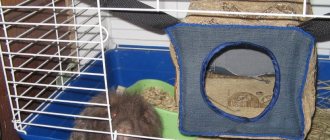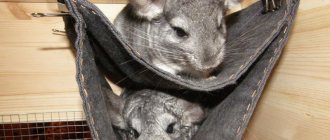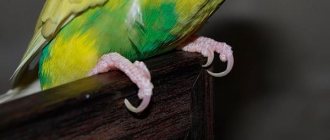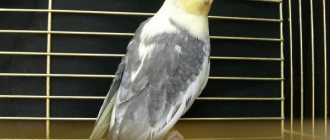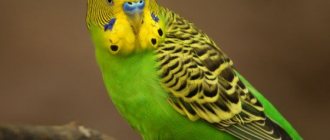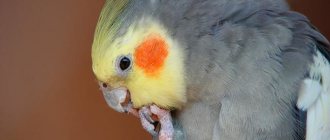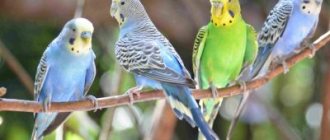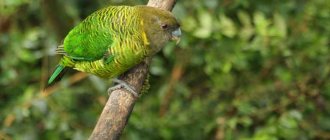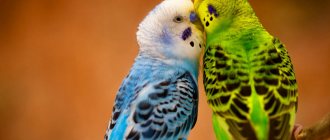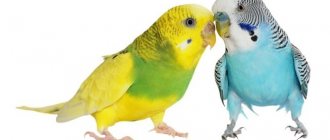Everything in our life happens for a reason. It is not for nothing that the radiant inhabitant of Australian woodlands was given a double sonorous name - nymph. Crested pets are famous for their good-natured disposition, sedateness, extraordinary affection for humans and longevity. If you draw an analogy with the beautiful ancient Greek deities, you will discover with interest that cockatiels are the animal embodiment of fairy-tale creatures. Not tolerant of fuss, playful and light parrots are not small birds, and therefore the home must be of appropriate size. And given the invisible connections with the Greek pantheon, it is truly royal.
Buying a cage for cockatiels is a must without any fuss. Having decided to acquire this type, you should carefully consider where it will stand, whether additional light sources are needed, whether the surrounding interior is safe, and much more.
Optimal design
The largest shelter possible will help to avoid injuries and prolong the joyful time of coexistence. A limited area can turn a cheerful pet, at best, into an apathetic, indifferent creature. The onset of depression and, as a consequence, health problems will completely lead the bird to death. Therefore, you need to understand the question of what kind of cage your cockatiel needs based on the recommendations of knowledgeable specialists.
Ornithologists advise choosing a home for your pet, carefully paying attention to the physiological characteristics of the chosen species. In this case we are dealing with a parrot the size of a pigeon. The wingspan covers a 30-centimeter space, so the width of the dwelling should be twice as large as these indicators. The height of the house takes into account the fact that birds like to hang with their tails up. As you know, it occupies more than half of the feathered body, and this plus another 60 cm. Staying on the perch should not crush the feathers; an ill-chosen height can break it. And, conversely, in this position the animal should not touch its head to the floor.
We recommend reading: Corella parrot: appearance and lifestyle in the wild
The main criterion for the size of a cockatiel's cell remains its length. In their natural habitat, animals cover distances of many kilometers and have proven themselves to be excellent flyers. When moving inside the cage space, the parrot should under no circumstances touch the walls or internal equipment. The resulting injuries, obesity and muscle atrophy accompanied by mental illness are the result of close living.
Form
Today, the structural diversity of feathered houses can satisfy even the most biased buyer: diamond-shaped, oval, square. However, when purchasing a home for a bird, you need to remember not about your desires, but about the comfort of the animal. Of course, cylindrical cages for a Corella parrot look impressive. But due to the lack of corners, the pet will not feel comfortable. After all, no one has yet canceled the presence of personal space. In addition, when moving around a round structure, the pet will not be able to linger anywhere, sliding down.
The most successful design is a rectangular structure. An abundance of angles, an oblong shape, a flat top of the roof, which will serve as an additional platform for games.
Dimensions
There are no thoroughly verified cell parameters. But there is a minimum cage size for a cockatiel, designed for one feathered resident:
- at least 80 cm length;
- 40 cm width;
- within 60 cm height.
Accordingly, for a feathered duo, the home should be twice as large. However, it is necessary to remember about daily walks around the room in order to give the freedom-loving bird the joy of free soaring.
Another equally important aspect of the housing dimensions is the width of the rods of the cockatiel’s cage. The distance between them varies from two to three centimeters. With large gaps, the head may get stuck when the parrot decides to explore the world outside the house. Small indentations look unethical, reminiscent of a prison rather than a home.
When choosing a feathered home, the weaving of the cage walls is of no small importance. If it is vertical, then the pet will constantly slide off, because climbing trees is inherent in nature. But on the other hand, it’s good for health; extra paw training won’t hurt. A good option with horizontal rods. But lattice walls are considered the optimally useful variety.
What is it made of?
Possessing a powerful beak and incredible curiosity, parrots are not averse to chewing on anything that is in bad shape. Therefore, when choosing cages for your cockatiel, you need to pay attention to the material from which it is made. It must meet all safety criteria.
- Durable design so that the animal does not end up in the wild one day.
- Environmental protection. You cannot purchase copper, galvanized or painted products. Small crumbs of zinc or paint, oxidized copper, can cause poisoning of a feathered pet. Wood is also not suitable for construction; it is very difficult to wash and clean wooden parts. Having swollen from water, it will lose its appearance, and the cracks that appear will serve as a breeding ground for dangerous pests. The most suitable material is stainless steel structures.
- Homogeneous surface without sharp corners, internal metal fasteners, or rough coating.
How to choose a suitable cage for cockatiels
In order to decide on the choice of cage, it is necessary to obtain at least the most general information about the bird for which it is intended.
Did you know? The Corella belongs to the Cockatoo family, not the Parrot family. The Latin name of the bird - Nymphicus hollandicus - reflects the beauty and tenderness of this representative of birds (ancient Greek nymphs are beautiful divine maidens, personifying various life-giving forces of nature). The cockatiel's homeland is Australia, but since 1960 these parrots have been prohibited from being exported from the mainland, so all the birds sold in our pet stores come from birds that were captured in captivity at least half a century ago.
One of the distinctive features of cockatiels is the presence of a contrasting crest on the head. These birds are given elegance and even some sophistication by pointed wings with long flight feathers and an equally long wedge-shaped tail, making up about half the entire length of the parrot. However, it is precisely these features of its structure that must be taken into account when selecting a suitable cell.
Dimensions
A cockatiel's cage should be appropriate for both the size and personality of the parrot.
The body length of an adult can reach 33 cm, the wingspan is 38 cm, which is approximately twice the average size of a budgerigar.
In addition, cockatiels in the wild never settle in tropical thickets, preferring open space to deep forests. It is for this reason that for this species of parrots it is important not just a roomy, but a spacious home (ornithologists note that these birds are actually better kept in aviaries rather than in cages, but in any case you need to strive for the largest possible size of the home, especially if We are talking about several birds).
Important! A cage for a budgie is absolutely not suitable for a cockatiel: it is too small for such a bird.
Experts talk about the following minimum cell sizes:
- length - 60 cm;
- width - 40 cm;
- height - 70 cm.
The main parameter in the cage is not the height, but the length, because the bird does not fly from top to bottom.
Lack of horizontal space can cause your cockatiel to injure its luxurious wings or break its tail. Find out how to choose a cockatiel parrot, what to name it, how to distinguish a boy from a girl in cockatiel parrots.
Form
As you know, cages for parrots can have a round, square or rectangular base. The cylindrical shape of the home looks very beautiful, but in this case the tastes of the owner and his pet do not coincide at all. If there are no corners, parrots feel uncomfortable, disoriented and nervous. In addition, when moving its paws along the curved rods, the bird will constantly slide, which can lead to injury.
The second question that often arises is the direction of the rods. In ready-made cage models, the bars are almost always positioned horizontally, since manufacturers are well aware that this option will allow the parrot to move freely along the walls, clinging to them with its claws and beak. However, models with vertical rods also exist, so when purchasing a product, you must pay attention to this point.
When inspecting the device of the selected model, you should also check whether it has a pull-out tray that can be cleaned without disturbing its occupant. However, if the parrot is given the opportunity to fly freely around the house (and proper care of the cockatiel requires this), you can clean the house while the bird is not in it. In this case, the presence of a pull-out tray is not such an important condition, although removing the tray is still much easier and more convenient than lifting the heavy upper part.
Learn how to care for cockatiels and their chicks.
Material
The material from which the cage is made must meet the following requirements:
- environmental Safety;
- strength;
- smoothness (so that the bird is not injured by sharp edges, corners, protruding objects);
- Possibility of quick cleaning.
From this point of view, wood, beloved by everyone for its naturalness and environmental friendliness, is not suitable as a material for a bird house.
Caring for it is quite complicated, it is heavy, it is inconvenient to wash and clean such material, and in addition, dangerous pests can easily grow in it. It is impossible to treat the boards with special antiparasitic materials - they can cause poisoning in the feathered resident.
Plywood is a lighter material, but it also has its drawbacks. As a valid option, you can consider MDF fiberboard due to its high environmental friendliness or thinner fiberboard.
Important! Chipboard (chipboard) contains a lot of formaldehyde resins, which are hazardous to bird health, and oriented strand board (OSB) is even less suitable for making cages. It should be noted that in the West there are two standards for chipboard - more and less safe from an environmental point of view. However, in Russia this classification is not accepted, so it is still better not to use domestic chipboard.
Nevertheless, such materials are only suitable for a pallet and only in the case of making a home for poultry using a homemade method; however, even in this situation, it is better to use modern chemical industry products - plastic or organic glass.
It is important to make sure that the material is strong enough: a bird is unlikely to be able to damage it, but its owner while cleaning or simply passing by is quite likely to do so.
It would be good if the pallet design included high sides. In this case, the parrot's waste products will not spill out of the cage and spread throughout the house.
Some models provide an additional grid that is placed on top of the tray, preventing the bird from being poisoned by pecking at stale food mixed with its own droppings (this garbage passes through the grid and becomes inaccessible to the parrot).
This will also help keep your bird's feet dry and clean. Many parrot owners do not welcome this design, believing that the cockatiel can be injured by the horizontal bars at the bottom of its house, but in reality the likelihood of such an accident is very small, and the advantages are obvious.
As for the walls and roof, it is best to give preference to stainless steel rods or mesh, and the distance between the rods (cells) should be at least 20 mm so that the parrot cannot stick its head through the rods and get injured.
Learn how to make an aviary and carrier for parrots.
What should be in a cockatiel's cage?
For a long-term home stay, a pet needs everything for a full life. It is most rational to purchase an automatic waterer for cockatiels made of organic glass or plastic. Here the water will stay fresh longer. In open containers there is a possibility of contamination with grain husks, remnants of other food, as well as waste products. In the mandatory equipment of what should be in a cockatiel’s cage, it is advisable to include a variety of toys, all kinds of bars and perches, at least two.
How to set up a cockatiel's cage without a bathtub? This is contrary to feathered laws. Especially in the warm season, it is useful to relax and rinse your feathers.
What equipment to choose for the cage
After you have chosen or made your own house for a parrot, the question that comes to mind is how to arrange a cage for a cockatiel with maximum convenience for your pet. Really. The issue of choosing housing for a parrot is not the only problem. It is also very important to properly equip the house for your cockatiel. It is imperative to purchase perches for relaxation and games. If the size of the cage allows, you can install several perches; most importantly, they must be made of safe and environmentally friendly materials, since birds love to clean their beaks on the perches. It is also desirable that the perches have not the same, but different sizes. It is better to purchase wooden perches rather than plastic ones. Purchased wooden poles should be changed periodically, and the choice of pear and pine poles should be abandoned. The former contain a lot of tannins, and the latter contain a lot of resin.
What other cage equipment should I purchase for my cockatiel? These parrots simply love water treatments. Therefore, you can put a small “bathing bath” in their house so that the bird can splash around.
As for drinkers and feeders, they also need to be chosen very carefully. It is better to purchase special hanging feeding containers so that the cockatiel parrot, whose cage should be high, can consume its favorite food while climbing around its house. Thus, you can place not one, but a couple of feeders.
It is advisable to choose container feeders made of steel or ceramic, and they must be installed as far as possible from the swings and perches so that droppings and debris do not get into the food.
Corellas are very active birds, so a caring owner will arrange the cage of his favorite parrot in such a way that he has the opportunity to move actively.
To do this, you can install swings, ladders, rope braids and other equipment. All these items can be made yourself or purchased at any pet store.
Some parrot owners have questions about this. Is it worth installing a mirror? If you can install a mirror, then why is it needed at all?
The fact is that cockatiels are very sociable birds and live in flocks in nature. A parrot living alone in a cage begins to feel loneliness after a certain period of time, which will certainly lead to severe stress. This in turn will lead to the fact that the cockatiel will simply get sick and stop eating. You should not forget that a bird experiencing stress begins to bite itself and pull out feathers. A mirror, of course, will not replace a cage partner, but a parrot that will constantly see its reflection will have the feeling that it is not alone in the cage. The Corella will no longer feel neglected and will become more active and talkative.
- about the author
- Recent publications
Inna Grabovaya
Candidate of Veterinary Sciences
Inna Grabovaya recently published (view all)
- Contents of Song Parrots -
- Features of passerine parrots -
- Pink-bellied parakeet -
If you liked the article, share it with your friends!
DIY cockatiel cage
A good, solid home for a feathered friend is an expensive pleasure. And there is no guarantee that it will fully comply with all the above standards. That’s why more and more breeders prefer to set up cockatiel cages with their own hands. Nowadays it is not difficult to buy consumables; modern stores are teeming with an abundance of all kinds of tools. On the Internet, knowledgeable craftsmen post detailed reports on how a home-made cage becomes a parrot’s favorite habitat.
Features of choosing a cage and appropriate equipment
It is advisable to purchase a design in which the rods are made of chrome-plated steel, not coated with paint. The fact is that parrots love to chew on twigs, and they do this out of boredom or when they are nervous.
If the rods are painted, then even the safest paint will cause poisoning if it enters the bird’s body. A cage with chrome-plated steel rods is safe in this sense; moreover, it will be easier to disinfect and wash, since the material does not oxidize at all when exposed to air or moisture.
Particular attention should be paid to the size of the cage. For one bird, a cage measuring 80x60x50 cm will be sufficient. If cages are chosen for two parrots, then the dimensions of the cage should be at least 80x80x150 cm.
In pet stores you can find cages of different sizes and modifications. However, you need to choose one whose depth and width should be much less than the height, since cockatiels love to climb very much. Good houses suitable specifically for such parrots are not found in all pet stores, but in this case, a do-it-yourself cockatiel cage is the optimal solution.
It is also necessary to decide where and on what the house for the cockatiel will stand. In specialized stores you can buy not only cages, but also a special elegant stand, but parrot owners say that it is better to buy a small floor cabinet with shelves on which you can put food and useful supplements for your parrot.
Those who are thinking about the question of what kind of cage is needed for a cockatiel should choose designs with a retractable bottom. Such a house can be cleaned of various contaminants more often and more easily.
Custom cage pros and cons
Of course, purchasing a home for a feathered pet is a complex and time-consuming task. You need to arm yourself with patience, especially if you are going to sculpt a cage for a cockatiel parrot yourself. Perhaps the finished product will look more elegant than a homemade structure, but there is no guarantee that your pet will feel as comfortable in a purchased house. After all, the main thing is not the purchase price, but the care on the part of the owner.
We recommend reading: How to tame a cockatiel parrot
Cockatiel cage shape
Round options often attract the attention of future poultry owners, but they are very inconvenient for those living in them. In such models, parrots are simply disoriented, and it is very inconvenient to move around the bars in round cages.
Horizontal or vertical grilles?
When purchasing, look at the location of the rods. Since all parrots like to move along bars, clinging with their claws and helping with their beaks, horizontal bars are preferable.
The distance between the rods must be selected so that it is convenient for the parrot’s legs to cover them. For a cockatiel, this distance can be 1.5 or 2 centimeters. The twigs themselves also need to be thicker than for budgies. And if the store tells you that you can buy a small version for one parrot, go to another store where the sellers will be more competent. Otherwise they will advise that then you will have to buy all the equipment in the second round.
Aviary
Researchers note that this species is best kept in comfortable enclosures. But not everyone has this opportunity. Some breeders, from the point of view of productive education and training, place large areas on the wall. Pets located at eye level feel calmer and adapt to new knowledge faster. Enclosures for cockatiel parrots can be equipped with small wheels in order to move them to the most convenient places. Aesthetically, it looks luxurious.
What size should the cage be?
To predict in advance the size of the cage for your parrot, you need to take into account that in such a “dwelling” the bird should easily spread its wings, and also fly inside from one perch to another.
- As a rule, a minimum cage size of 50 cm x 60 cm x 80 cm will be sufficient for one cockatiel.
But since most often the owners of parrots buy a pair so that the birds have a fun life and give birth to offspring, accordingly a pair of parrots will require much more free space.
There is one more nuance in choosing a cage for a cockatiel that the owner should know - the height of such a parrot “house” should be greater than the width and depth.
This is due to the fact that parrots need the ability to climb.
The correct cage will have sharp corners, as a rounded cage will cause stress and discomfort in the bird.
Cleaning the cage and aviary
Maintaining hygiene and basic sanitary standards is the key to the longevity of a feathered pet. Therefore, when purchasing an aviary for a cockatiel parrot, it is worth asking whether a retractable tray is provided, so that you can clean it in a timely manner without disturbing the parrot. It is recommended to carry out sanitary days at least twice a week. Before using the cockatiel cage, it is recommended to treat all elements with boiling water. If you were interested, leave comments and share on social networks.
Cage for corra
Before you buy a cage for your cockatiel, you need to find out what it should be like. Let's figure out what the requirements for the cage are, besides the fact that you like it)
Important! Birds are not suited to living in close quarters, which can cause them to injure their wings or get sick. Therefore, if you are currently unable to purchase a spacious home, be sure to let your cockatiel fly in the room for several hours every day.
The size of the cage for a cockatiel should allow it to fly around the cage, fluttering, jumping from perch to perch. Unfortunately, there is no consensus in the literature regarding the size of the home. Let's estimate the size of the cell ourselves. What will we start from?
The wingspan of a cockatiel is at least 30 cm. This means that in flight it does not catch its wings on the bars of the cage, the width of the cage must be at least 50 cm. Well, the depth, accordingly, is also 50 cm, if the bottom of the cage is square.
{loadposition1}
Further, cockatiels like to hang upside down, clinging to the ring or the top of the cage. Naturally, she should not touch her head to the floor. This means that the height of the cage must be greater than the full height (length) of the bird, from beak to tail, and another 10 cm. The length of the cockatiel is approximately 30 cm (half of which is the tail), measure your bird yourself. Total minimum 40 cm. Also keep in mind that at the bottom of the cage the space is taken up by a retractable tray; there may be a bathtub, a feeder, or something else. Add another 10 cm. Total minimum cell height is 50 cm.
From this we get that the recommendations that are most similar to the truth are:
For one cockatiel it is better to use a vertical cage measuring 60x50x50 cm, for a pair - a cage measuring 150x70x70 cm, but rectangular in shape
And of course, more space is even better.
For a cockatiel cage to be good, it must meet the following requirements:
- Pay attention to the bars. Wooden ones are not suitable because they will quickly deteriorate. They cannot be coated with paint. A cage made of steel is best . The parrot will not be able to bite through this fence and not be poisoned by small particles of paint, which the bird will definitely peel off with its beak. Steel cages are easy to clean and disinfect; they do not oxidize due to humidity.
- The cage should be such that the parrot can calmly spread its wings and flutter from one perch to another. The size of the cockatiel is quite large, so buy a large cage .
- The house needs a tall house . Choose a home so that one wall has horizontal weaving of twigs. Parrots love to climb. This will allow them to climb to the top and hang on the wall. They need this kind of exercise.
- There should be a tray at the bottom that slides out. This will help you remove the cage without opening it and disturbing the parrots. Debris and husks will fall onto the tray through the lower grille and the birds will not be able to reach them with their beaks. This will save your pets from the possibility of contracting infectious diseases and poisoning.
- You can make plastic sides to prevent the food from flying around the room.
The cage must have a bathtub for bathing . Parrots need bathing. They need to be given this opportunity at least once a week. After the birds have bathed, the water must be removed so that the cockatiels do not drink the dirty liquid.
The door needs to be wide . It should be convenient to stick your hand into it to wash feeders and perches and change food. The owner may need to take the pet out of the cage at any time. You need a hole size that allows you to do this without crushing the parrot.
Install several perches . They need to be hung in different places; the bird will move more, flying from one perch to another. Use perches such that the cockatiel does not completely wrap her paws around them. There should be some space, so the bird gets less tired. You can use tree branches treated with boiling water to kill germs.
Feeders are different. It is best to use store-bought containers with lids. But wide but shallow smooth plates will also work. Feeders are placed away from the perches to prevent bird droppings from getting into the feed.
Change the water every day. The drinking bowl must be washed thoroughly. Closed automatic containers are convenient to use. No garbage gets there, and the water is not polluted.
It is very important to purchase toys for your cockatiel . These can be ladders, bells, swings. They will bring a lot of joy to your pet. Toys should be removed and renewed periodically as they wear out and for washing and disinfection.
Selection of cage material
The cage material must meet all safety standards, be comfortable for daily use and not lose functionality when in contact with water.
Steel.
Steel bars or wire are the most commonly used material for cages. It is better to choose stainless steel, as moisture can degrade the appearance of the cage and lead to rust, mold and other common problems. Unstable, easily falling off paint on the rods is unacceptable, because parrots very often cling to them with their beaks. Pieces of paint accumulate in the bird's crop and can cause poisoning. Galvanized metal rods are also undesirable. Most manufacturers now use safe powder paints that protect the metal and practically do not wear off over time.
Tree.
Wood is an environmentally friendly and safe material, but rather impractical, especially if the parrot is large. The bird will chew through the material and will certainly get out, where various dangers may await it. A wooden cage with steel bars is suitable for temporary housing of a small sized parrot. In addition, this material absorbs unpleasant odors, moisture, and loses its aesthetics and functionality due to regular wet cleaning. And high humidity is always dangerous for poultry. Such conditions are favorable for the proliferation of fungi and various pathogens that can cause dangerous diseases in birds. So let the tree be present in the cage in the form of perches, which can be easily replaced if necessary.
Sometimes you can see on sale cages made of non-ferrous metals such as copper, cages made almost entirely of transparent plastic, strange designer creations. No need to purchase such products! There's nothing better than a proven steel rectangular cage with a sturdy tray.
